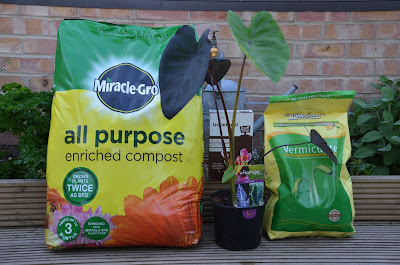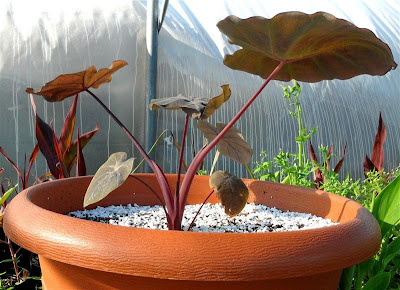 |
| How to grow Colocasia |
If you are trying to create a tropical looking garden, but live in a north European climate, a little research will tell you that your options are going to be limited. Cannas, bamboo, and hardy palms are now a mainstay of council planting schemes, so to avoid having a garden that looks almost identical to a local roundabout you are going to need to be a little more adventurous.
 |
| How to grow Colocasia |
Colocasia is a genus native to tropical Polynesia and southeastern Asia. The roots of the Colocasia esculenta are in fact edible and have been cultivated in Asia for more than ten thousand years.
Its common name the 'Elephant's-Ear plant' gets its name from the leaves which can be as large as 60 inches, which are shaped like a large ear or shield.
To get the best out of your plants in the garden they require three fundamental growing conditions, a rich soil, plenty of sun and plenty of water. Be aware that the leaves of Colocasia esculenta are designed to shed water, so even after quite a heavy rain shower it is not uncommon for the soil at the base of the leaves to be bone dry.
It is essential to the plants to get underneath the leaves with a hose and really soak the soil, especially in hot spells. If you hold back on the watering, your once stunning centrepiece will be looking ready for the compost heap!
 |
| How to pot on Colocasia |
The plant can be grown in the ground or better still in large containers. They are grown outside year-round in subtropical and tropical areas but in temperate European regions, they are planted out for the summer and then lifted and stored over winter.
Growth is best at temperatures between 20 to 30 °C (68 to 86 °F), but the plants can be damaged if temperatures fall below 10 °C (50 °F) for more than a few days.
If you have bought your Colocasia as a section of root then plant it in a good sized pot, 10 inches or so, using a good quality compost such as John Innes 'No 3'.
You can also add a small handful of growmore, and vermiculite/perlite to improve water retaining qualities. The root tuber is typically planted close to the surface. The first signs of growth will appear in 1 to 3 weeks.
 |
| Image credit to www.briansbotanicals.net |
The plants should not be left to go dry for too long; if this does happen, the leaves will wilt; watering will allow the plant to recover if done before they get too dry. Periodic fertilization every 2 to 3 weeks with a common plant fertilizer will increase foliage growth.
For related articles click onto:
Agave
HOW TO GROW COLOCASIA
HOW TO OVERWINTER COLOCASIA
THE ELEPHANT EAR PLANT







No comments:
Post a Comment